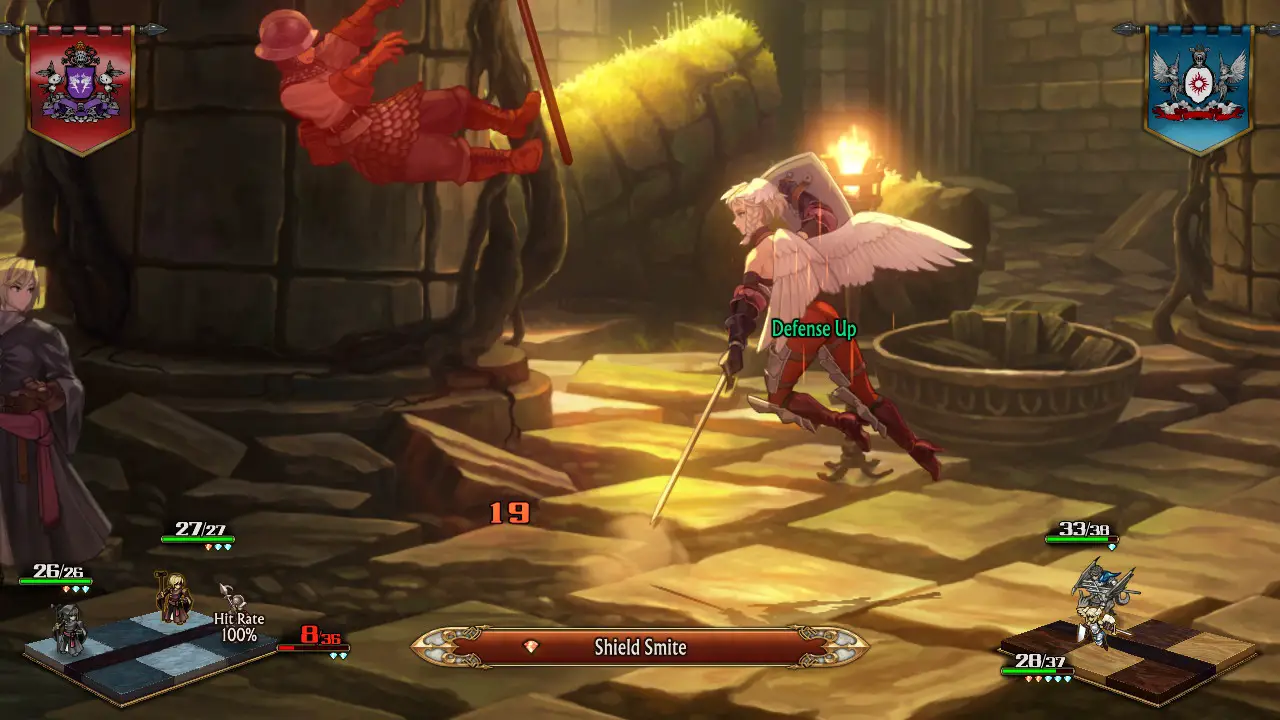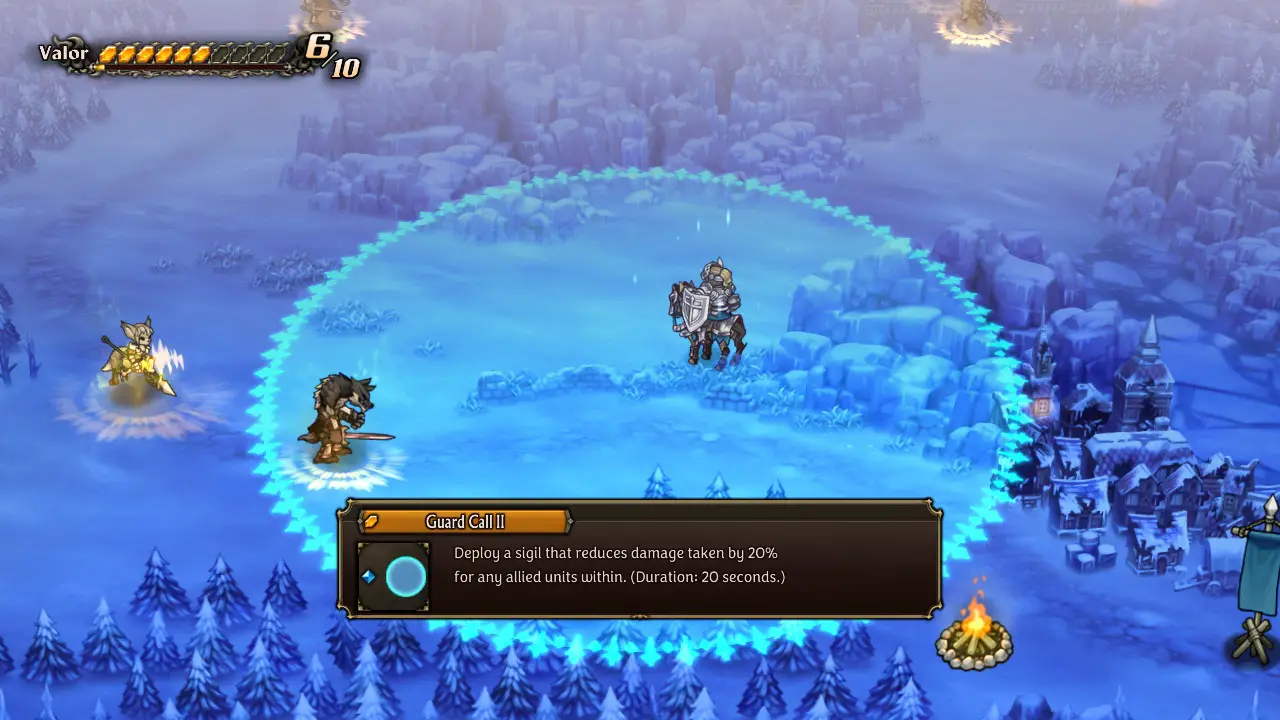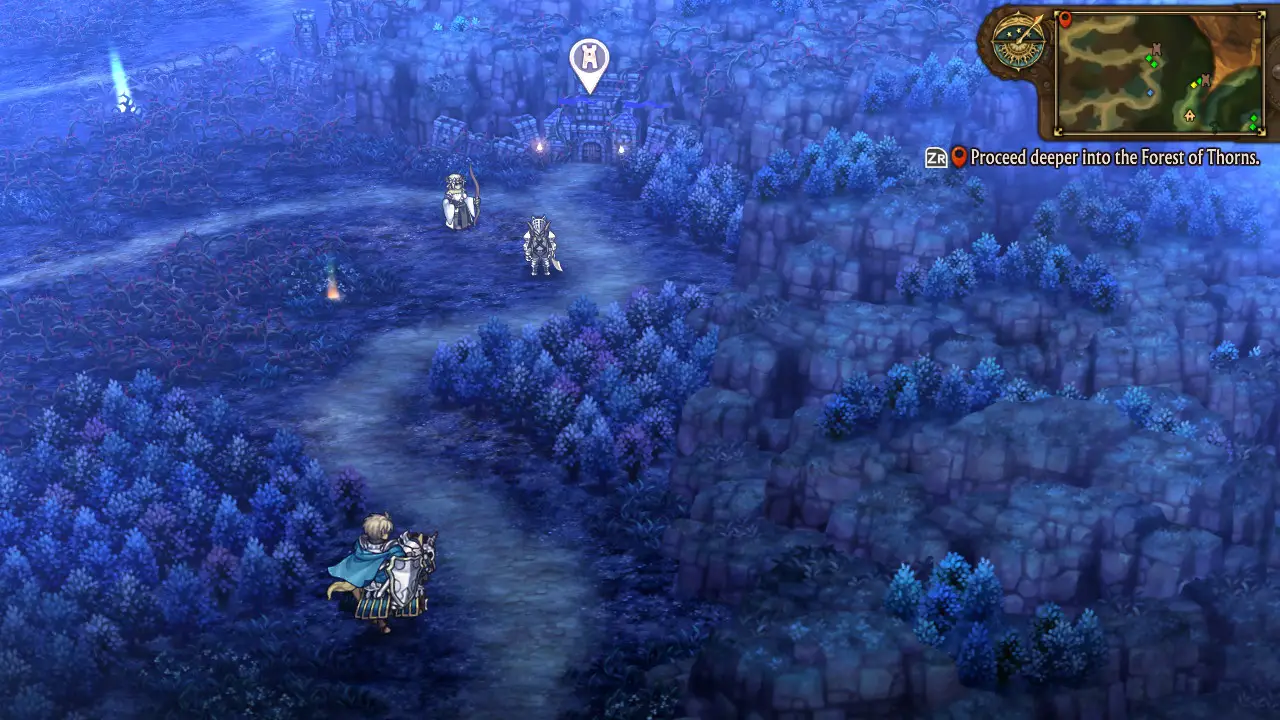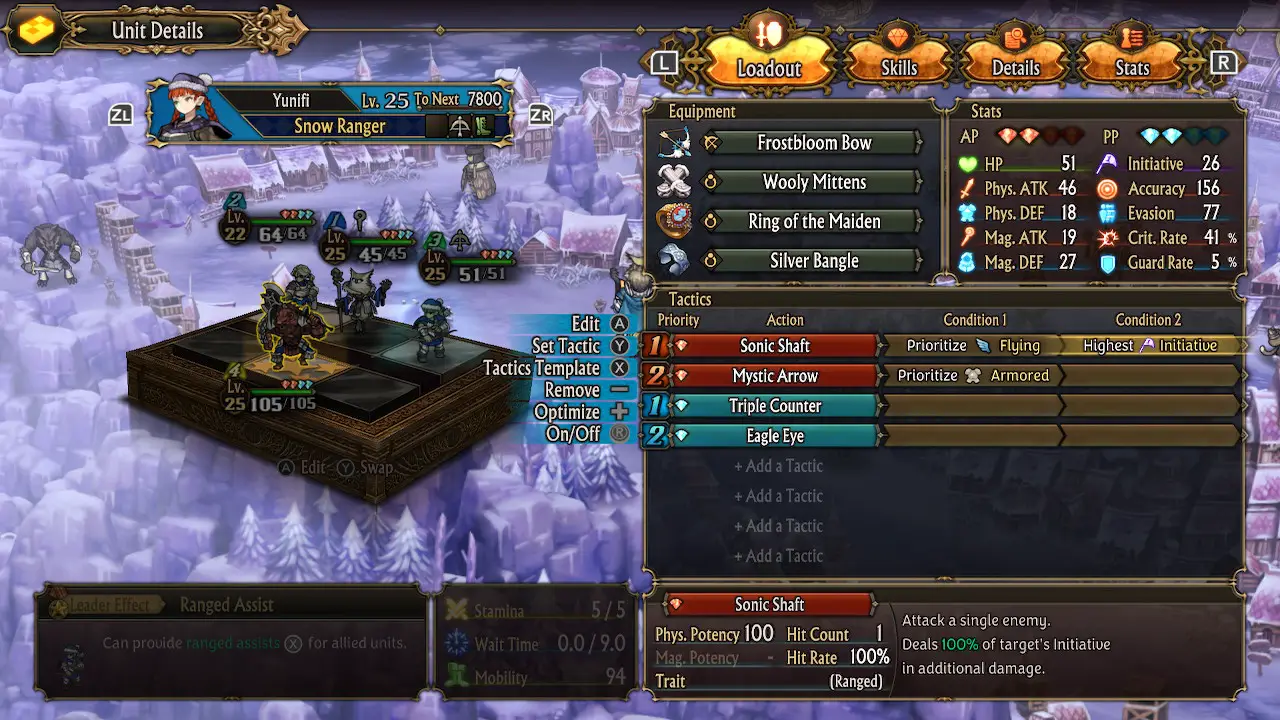
Queen Ilenia of Cornia is no more. In a shocking invasion, she was struck down by the leader of the Zenoiran army, Galerius. As the newly crowned emperor, Galerius would go on to conquer all of Fevrith’s nations, ruling the lands with an iron fist. All hope is not yet lost, however, as rumors spread of Ilenia’s son, prince Alain, being spirited away before her death. Chosen by the holy Unicorn, Alain leads the Liberation Army against Zenoira. But will his meager resistance be enough to topple an empire?
Unicorn Overlord is the latest title from the legends at Vanillaware. You may know them from titles such as Muramasa: The Demon Blade, the controversial yet extremely good Dragon’s Crown, the incredible sci-fi tale of 13 Sentinels: Aegis Rim, or their first and still unlocalized (not even a finished fan translation) title, Princess Crown. Or you may not know them at all, since they’re still pretty niche in the west. Regardless, they make great games with incredible art styles and Unicorn Overlord is no different.
Unicorn Overlord is a strategy RPG with realtime elements. Battles occur on the overworld, with your goal usually being to capture the enemy’s stronghold. You do this by deploying units, groups of characters who fight alongside each other in battle, and direct their march with your cursor. Walking a unit into an enemy unit will start a battle, which you can watch or skip by pressing Plus. If you defeat the enemy, they disappear from the field, but if you can’t quite take them out, they’ll be knocked back so long as your total HP is higher than theirs at the end of the fight. The reverse is also true, so be sure to check if your unit can properly stand against the foe by hovering over the enemy unit before ordering your attack. This will show you the final outcome of the conflict, though not in detail. For example, a battle may show your unit regaining HP by the end, but that’s just in total, as one character perished in the fight while one with much more maximum HP was healed to full.
There’s a lot to consider in skirmishes, including things I haven’t mentioned yet like assists from other units, Valor Skills, items, and more. However, the key to success in Unicorn Overlord actually lies in preparation. In addition to placing characters into a unit on a 3×2 grid, you need to micromanage the equipment and directions of every character in your army to get the most out of their skills.

Let’s use an early game healer, Scarlett, as an example. Just like most other characters, Scarlett begins every fight with one AP, or Active Points, and one PP, or Passive Points. Skills that use AP are active and occur when Scarlett gets her turn in battle, while PP skills are more like reactions to other people’s actions and can trigger before or after them. Each action she can take in battle, listed under her Tactics menu, will consume at least one AP or PP, so you want to get the most out of every single one. So, for her healing actions like Curing Call or Quick Heal, you want to make sure they only trigger when an ally’s HP is less than 100%. You can then set a condition to only use this action when any ally’s HP reaches a certain percentage. Simply optimizing her equipment and tactics will do this automatically, but then she might heal someone missing only 1 HP rather than the person right next to her who is on death’s door. To fix this, you can set a second condition to prioritize the ally with the lowest HP percentage.
There are a ton of conditions you can set for every action, like making arrow attacks that never miss and always prioritize flyers, who are weak to them, or thieves, who are likely to dodge any other type of attack. It’s fun to micromanage your army and then see the fruits of your labor pay off in battle.
You get so many characters over the course of the game it can be pretty overwhelming to keep track of everyone. You do have the optimize button, but as I said earlier it never gives you the most efficient tactics. Unfortunately, optimizing your equipment when you frequently acquire new gear to use will also optimize your tactics, which can get super annoying after a big shopping spree. It’s a strange oversight since you can optimize tactics separately from equipment, and fixing up my tactics every time I wanted to update my equipment became very time consuming.
Next, when forming a unit, you’ll want to consider how everyone will work together. Do you want to put all the swordfighters together as one specialized unit or spread them out and cover other units’ weaknesses? Do you want a healer alongside your dark knight, or forgo that to get the dark knight’s low HP bonuses? Will putting your tanky shield guy in front of the Druid allow the latter to survive and debuff the enemy longer, or is it better to put the former in front of the fragile sorceress? Finally, who will lead the unit? The angel so she can fly the party over difficult terrain, or the healer so he can support other units from afar? You’re constantly acquiring new options throughout the entire game, and even by the end – after over 50 hours – I’m still thinking of ways to improve my army. This is the real meat of the game, and while it can be complicated and overwhelming, it’s incredibly satisfying to see your strategies put to the test and overcome the odds.

As you explore Fevrith on the world map, you’ll find a ton of battles waiting for you around every corner. These can be one-off encounters that grant no experience and disappear after being defeated (they make sure you’re up to snuff for the current area), or actual battles to take back towns and territory for the Liberation. Once you’ve freed an area, you’ll be able to roam freely and access facilities like towns or forts without random encounters with enemies. At forts, you can spend Renown (one of the game’s three main currencies) to hire mercenaries to fill out your ranks, expand the size of a single unit (up to 5 total characters), promote individual characters to the next form of their class (increasing their base AP and PP in the process), or even pit your units against each other to test your strategies. Towns will allow you to purchase new equipment and usable items, which I used very liberally throughout the game to revive characters or heal units.
Towns also need to be reconstructed to reach their full potential. You do this by delivering materials you can find at certain points spread all throughout the overworld. Once a town is back to its former glory, you can even station a guard there to automatically collect nearby materials and generate gold after every battle. You won’t have nearly enough characters to guard every town if you mostly use the story recruits, so it may be worth hiring a few mercs just to generate some resources for you.

After you’ve stocked up on curatives and weapons, it’s time for the next fight. The number of units you can deploy is determined by your Valor, seen in the top left as a meter that will fill into 10 maximum pips to spend. Deploying a unit from a stronghold you’ve captured costs one Valor, but you almost never want to deploy your whole army in every battle. Instead, you can also spend Valor on Valor skills, which are special abilities unique to each character. For example, for 3 Valor points Alain can increase his and any units around him’s attack and defense for their next fight. If you’re far away from a unit you want to take out, it may be worth spending a point on Dinah’s jump ability to get there right away. You only earn valor through defeating enemies, finding items on the battlefield, or taking checkpoints, so you need to balance your skills and deployment appropriately.
This is doubly true since every unit only has a certain amount of Stamina, shown above their head. One Stamina is consumed every time the unit engages in battle, and can only be restored by resting, which will leave them vulnerable for about 10 seconds (not including paused time). If a unit is out of stamina, they can still fight off foes who touch them, but they cannot move an inch on the battlefield. Sometimes it may be better to put off resting, and other times it may be more beneficial to rest earlier than necessary, especially in a town which will cut down on that lengthy 10 second timer AND provide some passive healing.

Unicorn Overlord has a LOT of mechanics and systems, but they all feed into each other in a very satisfying way. The loop of getting through a battle, restoring a town to buy even better gear, then equipping that gear and adjusting your tactics accordingly for the next battle makes for an incredibly engaging loop. It does falter in a few ways, like the aforementioned optimization button being suboptimal or a level gap that requires a bit of grinding late in the game, but it’s overall an incredibly fun time.
Its biggest fault is the lull in the story that occurs for almost all of the angel nation, Albion. Normally the game follows a few characters alongside Alain in a short storyline as you take back the country, but Albion is very light on story for some reason. What plot there is follows Scarlett who, to be honest, I found uninteresting and almost unlikable. She’s the typical childhood friend character who has a crush on the protagonist (Alain can marry basically any recruitable character in the game, including men, and Scarlett wasn’t even in the running for me). Every other female character is more interesting than her, and it’s a shame they couldn’t make her more interesting through this albeit brief storyline. Also, the jiggle physics on her breasts is incredibly off putting and weird. Stop it.

Despite those issues, I’m excited to go back for the post-game and even try new strategies in another playthrough. As someone who’s not usually into strategy games, I found Unicorn Overlord absolutely engrossing. Vanillaware has done it again and created another modern classic.
Unicorn Overlord
Excellent
Unicorn Overlord has some of the best and most enjoyable strategy gameplay out there. It’s gorgeous and engaging, and will have you wanting to uncover every inch of Fevrith before you put it down.
Pros
- Tactics system is awesome
- Incredible visuals
- Fun to explore overworld
Cons
- Optimize feature usually gets in the way
- Can be somewhat overwhelming
- Albion story is boring
